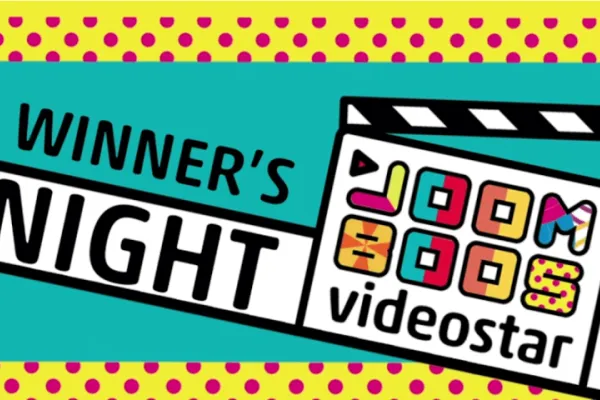 Details
Details

By Malia Keirsey
Marketing expert, web designer, blogger
Chicago, US
Connect
Dear publishers doing native advertising please do not make these mistakes when you are trying to target a young audience.
There’s no denying that millennials and members of gen Z respond better to paid content than they do traditional online advertising as numerous studies show.
However, there’s still plenty of room to make mistakes. Even worse, if you insult, irritate, or erode trust with members of these two groups, getting them back is arduous. Sometimes the task is impossible.
If you don't care about getting native advertising right for a young audience consider the following statistics:
• Millennials spend over 600 billion dollars annually and that number is growing
• They are much more likely than older generations to do their shopping online
• Mom’s Who Are Millennials Spend a Significantly Larger Amount of Time on Social Media
• Members of Gen Z who aren’t old enough to work receive on average close to 17 Dollars in weekly allowance. Most of this is freely spent.
• Gen Z also has a big influence on how the rest of the family spend its budget
Reaching a young audience with native advertising requires a deft touch
However successfully reaching a young audience with native advertising requires a deft touch. The reason that native ads are appealing to young people like me is because they lack the disruptive elements so prevalent in traditional advertising. At least that’s the idea. When native ads are disruptive, they stick out like a sore thumb. Poor quality and bad timing can also result in degradation of the user’s experience.
Keep reading to learn which thirteen mistakes you should avoid when targeting a young audience with native advertising.
RELATED: Millennials Have Spoken: Choice-Based Marketing is the Only Future
1. Failing to put thought into your headlines
Most millennials pay close attention to the headlines in native ads, according to my experience. They're focused on getting the most out of everything they do. Including clicking on an article. So while the headline isn’t as important as the content, it certainly is an asset in getting millennials to care about the content.
By writing powerful, catchy, and relevant headlines you can increase the effectiveness of your ads. Much of the advice that you may have read about creating headlines -- but might usually think sound too clickbaity -- applies here as long as the content live up to the promises of the headline. A young audience doesn't necessarily equate in your face headlines with superficial or bad content.
RELATED: 11 Essential Guidelines for Premium Publishers Doing Native Advertising
Using numbers in your headlines is very effective. So is using power words. If possible, try to create a mini cliff hanger with your headline. For example:
• He Couldn’t Believe That Baking Soda Could do That!
• Parents Ignore This Important Warning Sign. But Teachers…
• You Won’t Believe What You Can do With Just Two Ingredients!
2. Ignoring the feed
The overwhelming majority of millennials and gen Z kids who engage with native advertising do so when it comes to their social media feeds. If you aren’t focusing solely, or at least mostly, on social and other feeds, you’re probably missing the lion’s share of your target audience.
RELATED: Why the social media feed is so important for native
Ensure that your native advertising strategy is heavily focused on getting your ads out on Facebook and other feed based platforms. Start you native advertising campaign by thinking about which elements will do well on social platforms and how it will look on mobile rather than desktop.
3. Not matching the quality and tone of content to the platform
One very common way that advertisers unwittingly create disruptive experiences is that they don’t match their ad content to the platform where it will be displayed.
If you place a seriously toned and detailed sponsored article on retirement planning on an entertainment website, it will likely be ignored unless you use the tone-of-voice of that platform to explain the serious matters of your subject as well as the headline advice earlier mentioned.
Research the native advertising platforms you want to use carefully. They should be appropriate for your overall branding as well as for the content in your ad.
4. Failing to auto play videos
This is a small thing, but details matter. The majority of younger consumers prefer that any videos in native ads begin playing automatically. Sound, of course, should remain off.
RELATED: New Report: Here's 3 Main Trends for Native Video
One entity that does a very good job at this is ‘Tasty’ the food related subsidiary of Buzzfeed. Their sponsored videos appear in thousands of newsfeeds daily, and autoplay is used in all of them. The result is that the video immediately catches the viewer’s eye.
This is an audience that loathes dishonesty
5. Engaging in Click Bait

This is an audience that loathes dishonesty. If they feel as if they have been duped or misled, the chances of ever successfully targeting them again is near impossible. This happens in native advertising when the advertiser is guilty of one of the following mistakes:
• Enticing readers to click into spammy low-quality content using headlines that promise more than they deliver
• Using slide show style content with multiple ‘next’ buttons leading to ads. They slow down the loading time and they're just annoying
• Teasing with a short video or intro paragraph then leading the reader to a landing page. Instead you should give your audience content that intrigues them to voluntarily click on the landingpage about your product or service.
6. Poorly written or produced content
Native advertising content must be written with the same quality standards that you apply to your blog posts, marketing emails, white papers, etc. Content must be interesting, engaging, and ideally, contain lots of images. Video content should have high-quality production values and well-written scripts.
RELATED: How Publishers Can Set Up Successful in-house Content Studio Teams
If your company does not have the in-house staff capable of taking these tasks on, it may be time to look into hiring a professional help or using hiring the content studio at your media company of choice. Using the services of a reputable video production company is a good investment. For writing assistance, use a content provider with the best websites ratings that you can afford.
Be careful not to adopt a new personality or tone in your content as a way to reach younger audiences.
7. Lack of authenticity
It’s okay to be a nerd. Just don’t be a phoney. Native content should be genuine. It should reflect your organisation's branding. Be careful not to adopt a new personality or tone in your content as a way to reach younger audiences. They’ll see right through it and the results won’t be positive.
Native content that focuses on younger consumers should address things that are relevant to them. However, that doesn’t mean that you have to abandon your core, company persona.
8. Failing to cast a wide enough net
YouTube, Facebook, Instagram, online news sites, your own website, Tumblr are just a few examples of platforms for native advertising. One could even say that feature films can be used as a platform for native ads (e.g. The Lego Movie).
If you’re only focusing your efforts on one or two channels, you aren’t getting enough out of your native campaigns. Investigate all of the possibilities available to you and cast a wider net including when it comes to new technologies such as AI, VR, AR etc.
RELATED: How AI and New Technologies Will Push the Limits of Native Advertising
9. Using native too late in the funnel
The content used in native ads is most appropriate for customers just entering the funnel, and those who haven’t yet entered. In order to meet the objective of not disrupting the user experience, native content shouldn’t focus too much on products and prices. Instead, it should contain getting to know us content as well as curated content that creates a feeling of goodwill.
RELATED: Why native advertising is right for top funnel content
While sharing native advertising content with customers who are further in the journey won’t likely have a negative impact, it’s probably a waste of resources. Be aware of the customers’ needs and provide them with content that is relevant to them.
10. Poor placement
Before you commit to a native advertising solution, investigate it thoroughly. Your ad content is important, but so is placement. This includes the platforms where your ads will be seen, but also the ads that will appear alongside yours.
If a millennial scroll down to the bottom of a news article and sees a bunch of sensationalistic sponsored content such as:
• This Trick Will Help You Lose 100 Pounds in 30 Days!
• You Won’t Believe What Madonna Looks Like Today!
• Bill Sold Hillary Out! Jail Time is Imminent
RELATED: The True Cost Of Accepting Promoted Content on Your Website
They aren’t going to click those ads. At least they won’t do it twice. Unfortunately, if your ad has been placed on that page, they aren’t going to click yours either.
Don't treat the millennials like a monolith, and don't base your native advertising approach on stereotypes
11. Insulting millennials’ intelligence
Remember that this is a diverse group that encompasses a large variety of demographics. This audience ranges from students to lawyers to college professors to factory workers and everywhere in between. Don’t treat them as a monolith, and don’t base your native advertising approach on stereotypes.
It may be a good idea to use segmentation to focus your ads on the specific groups within these generations rather than attempting to market to them as a whole. Whatever you do, don’t use content that portrays millennials as clueless, irresponsible, or directionless.
12. Failing to be culturally sensitive

As a whole, these two generations place a lot of importance on equality and social justice. Language and word use matter and so does diversity. Double check your content for the following:
• Use of inclusive language when referring to race gender orientation, status and ethnicity
• Avoiding stereotypes
• Images and videos that reflect diversity
• Avoiding cultural appropriation
Younger consumers want to support organisations whose values align with their own
13. Not communicating your values
Younger consumers want support organisations whose values align with their own. This is why companies like Tom’s shoes who weave charitable work into their business model are so popular with these two target audiences.
Remember that native advertising shouldn’t just focus on your products and services. This is a great advertising medium for sharing your history, communicating what is important to your organisation, and letting your audience know where you stand on important issues.
Many companies chose to use the 2017 Super Bowl as a platform for doing this. 84 Lumber and Anheuser-Busch created ads that were particularly compelling.
Conclusion
The two youngest generations of consumers, Gen Z and millennials, are extraordinarily valuable to brands. Native advertising could quite possibly be the most effective tool for reaching them. Unfortunately, making tone deaf mistakes and not considering the special needs and interests of these groups can cause lots of harm to your brand. But by avoiding the 13 mistakes above, you can successfully reach this audience. Good luck!
Sign up for the Native Advertising Institute Newsletter and get weekly insights and news from the people who live and breathe native advertising.
Photo credit: Alexis Brown/Unsplash


